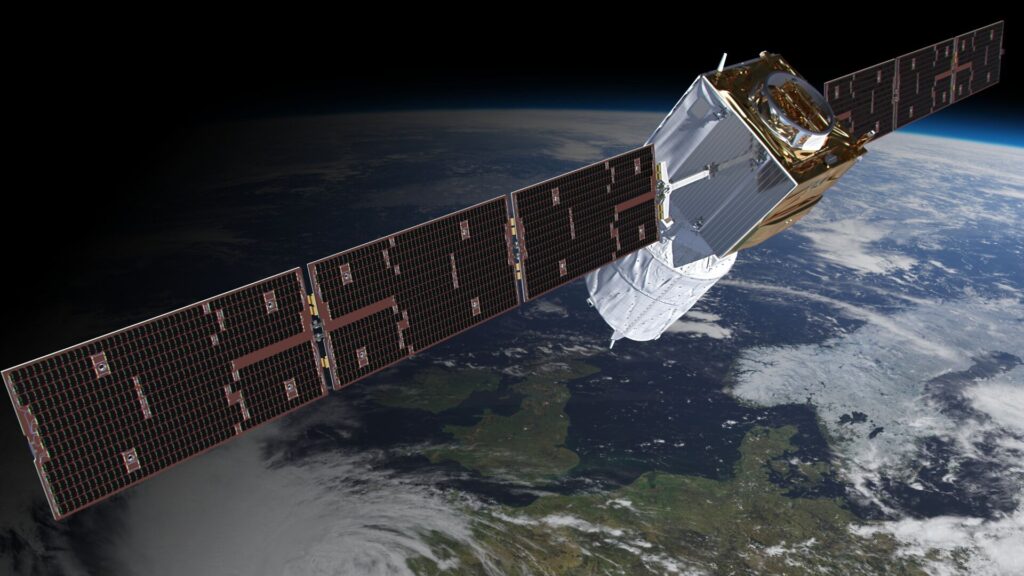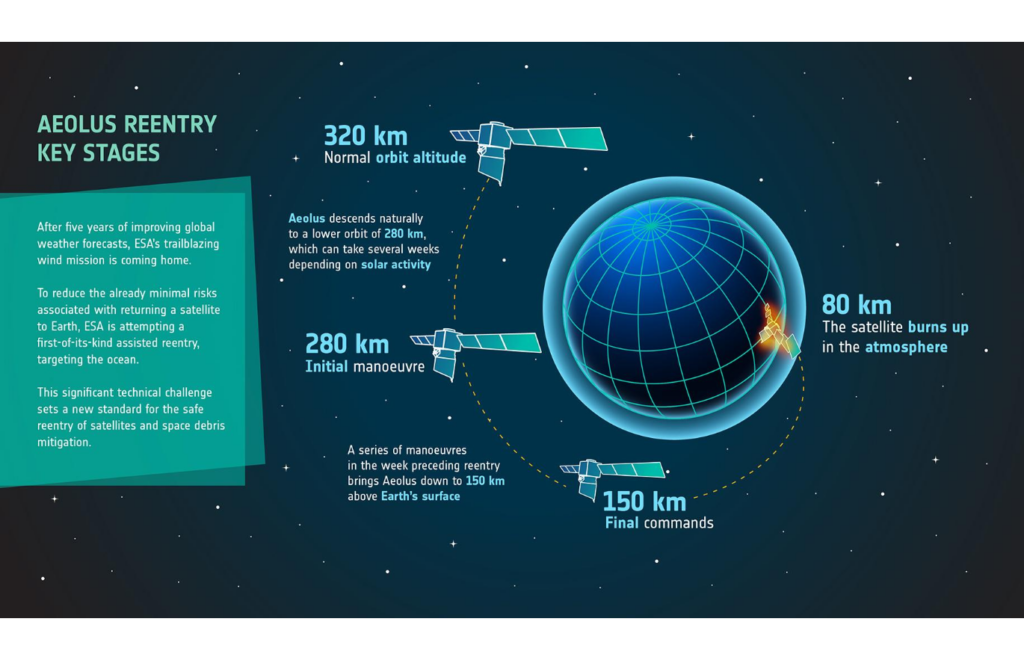ESA specialists are developing a plan for a controlled descent from the orbit of the Aeolus weather satellite, which has almost exhausted its fuel reserves. Currently, the altitude of its orbit is decreasing at a speed of about 1 km per day, and the rate of fall is accelerating.
Completion of the Aeolus satellite mission
Aeolus was launched in 2018. It became the first satellite in history designed to conduct global observations of winds in the earth’s atmosphere. For this, scientists used an ALADIN ultraviolet laser installed on board.

The nominal scientific program of Aeolus was designed for 3 years. In reality, the spacecraft has been working for almost 5 years, collecting a lot of very valuable data that has significantly increased the accuracy of weather forecasts. Aeolus could have continued its observations further, but, unfortunately, it has almost exhausted its fuel reserves. The fact is that the satellite was in a 320-kilometer orbit. At this point, the Earth’s atmosphere has a noticeable effect on spacecraft, which is why they need to perform regular maneuvers to maintain altitude. The current increase in solar activity also played a role.
In this situation, ESA decided to use Aeolus for the final controlled re-entry experiment. Thus, the space agency wants to avoid the risk of unburned fragments of the 1200-kilogram spacecraft falling in a populated area.
Plan of the de-orbitation
According to experts, since the Aeolus project was developed back in the late 1990s, the spacecraft is not formally designed for controlled descent from orbit. Nevertheless, ESA managed to develop a plan for the safe “disposal” of the satellite.

The ESA plan looks like this: When the height of the satellite’s orbit reaches 280 km, it will receive a series of commands, after which it will perform a maneuver that will reduce the height of its orbit to 250 km. Then the satellite will perform four maneuvers that will reduce its height to 150 km. The estimated lifetime of Aeolus in this orbit will be 12 hours. After the engineers have checked the spacecraft, it will perform the final maneuver, which will ensure the fall of its debris over the ocean.
At the moment, the ESA cannot give an exact date for the start of these maneuvers. It will depend on the rate of descent of the spacecraft, which, in turn, is strongly influenced by solar activity. Now the Sun is producing a large number of flares. They lead to the “expansion” of the earth’s atmosphere, which contributes to the accelerated descent of objects from orbit.
According to https://www.esa.int
Follow us on Twitter to get the most interesting space news in time
https://twitter.com/ust_magazine
